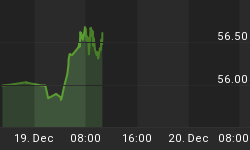
Source: AgriMoney(2013)
That North America is to have a bumper corn harvest this coming Fall seems to be well known. U.S. corn harvest in September/October is expected to be almost 30% above the drought-reduced crop of last year. On that matter we need to remember several realities. First, that corn exists at this time only on paper. None is yet in the bins. Further, despite the prospects for more U.S. corn, little changes in the global Agri-Food situation.
Above chart plots the days of consumption of global grains, course grains plus wheat, in reserve, or in the bins, for the past 22 crop years. For this calculation we use course grains plus wheat which excludes rice and soybeans but includes corn. Most rice is consumed locally, and little trades in world markets. Soybeans are a source of vegetable oil, and should be considered in the vegetable oil group that includes canola and palm oil.
As can be observed in the chart, during the 1980s and early 1990s global grain reserves averaged about 100 days of consumption. The peak of ~130 days was reached in the mid 1980s. Since then grain reserves have declined when measured by consumption through the first decade of the 21st century. More recently global grain reserves have averaged only about 70 days.
The world has eaten the Agri-Grain surplus of history
and now eats crop-to-crop regardless of the size of the U.S. corn crop.
Over time the prices of grains and other Agri-Foods have reflected the deteriorating global Agri-Food situation. As the size of the global grain surplus went down the price of grains went up. Remember the critical fact is that the gross size of grain production no longer determines Agri-Food prices. Global grain production relative to global Agri-Food demand is what determines prices.
In the chart above the recent low for days of supply is 2013. That is not a calendar year, but rather a crop year. For example, 2013 plot includes corn for 31 August of this year. For the end of the crop years in 2013 the world will have 66 days of grain consumption in reserve. Next Summer, 2014, the world will have 70 days of consumption. The "bumper" crops to be harvested around the world will only add 4 days of world consumption to grain reserves.
One would get the impression from reading and listening to journalists and investment gurus, a low information group if ever there was one, that the world will suddenly be awash in grain after the Fall harvest in North America. But, how important is the coming U.S. corn harvest? Additional corn to be harvested in the U.S. this Fall amounts to less than 2 days of global grain consumption. In short, it will have no material impact on the short supply situation in global Agri-Grains.

Two decades of a tightening global Agri-Food system has led to an era of seemingly never ending higher prices. As shown in the above chart, our Agri-Food Price Index continues at near the high of the past almost seven years. Reason for that extraordinary price gain has been that contrary to the Street's focus, Agri-Foods includes more than corn. Indeed, this index includes the 15 important Agri-Foods. (See any issue of Agri-Food Value View for details.)
Those rising Agri-Food prices as well as higher volumes to satisfy increasing global demand have indeed benefitted far sighted investors as shown in the following chart. In that chart is plotted an index for the First Tier Agri-Equities. That index includes the important global Agri-Companies as well as niche companies.

2013 may be considered the Year of Supply as the global Agri-Food supply balance rises dramatically from 66 days to 70 days. 2014 and beyond will be the Years of Demand dominance. Consumer income in developing nations is rising faster than the ability of the world to increase Agri-Food production. So, forget the futures market's projection for December corn, and focus on all the years ahead when the world may not have adequate corn, or other Agri-Foods.
AgriMoney: Wealth Creation Through Agri-Food Investments is the premier source of learning on Agri-Investing. This book opens the world of Agri-Investing to investors that want to be ahead of the Street. AgriMoney is now the primary educational resource for Agri-Investors, new or experienced. See our web site.
Ned W. Schmidt,CFA is publisher of The Agri-Food Value View, a monthly exploration of the Agri-Food grand cycle being created by China, India, and Agri-Energy. To contract Ned or to learn more, use this link: www.agrifoodvalueview.com















